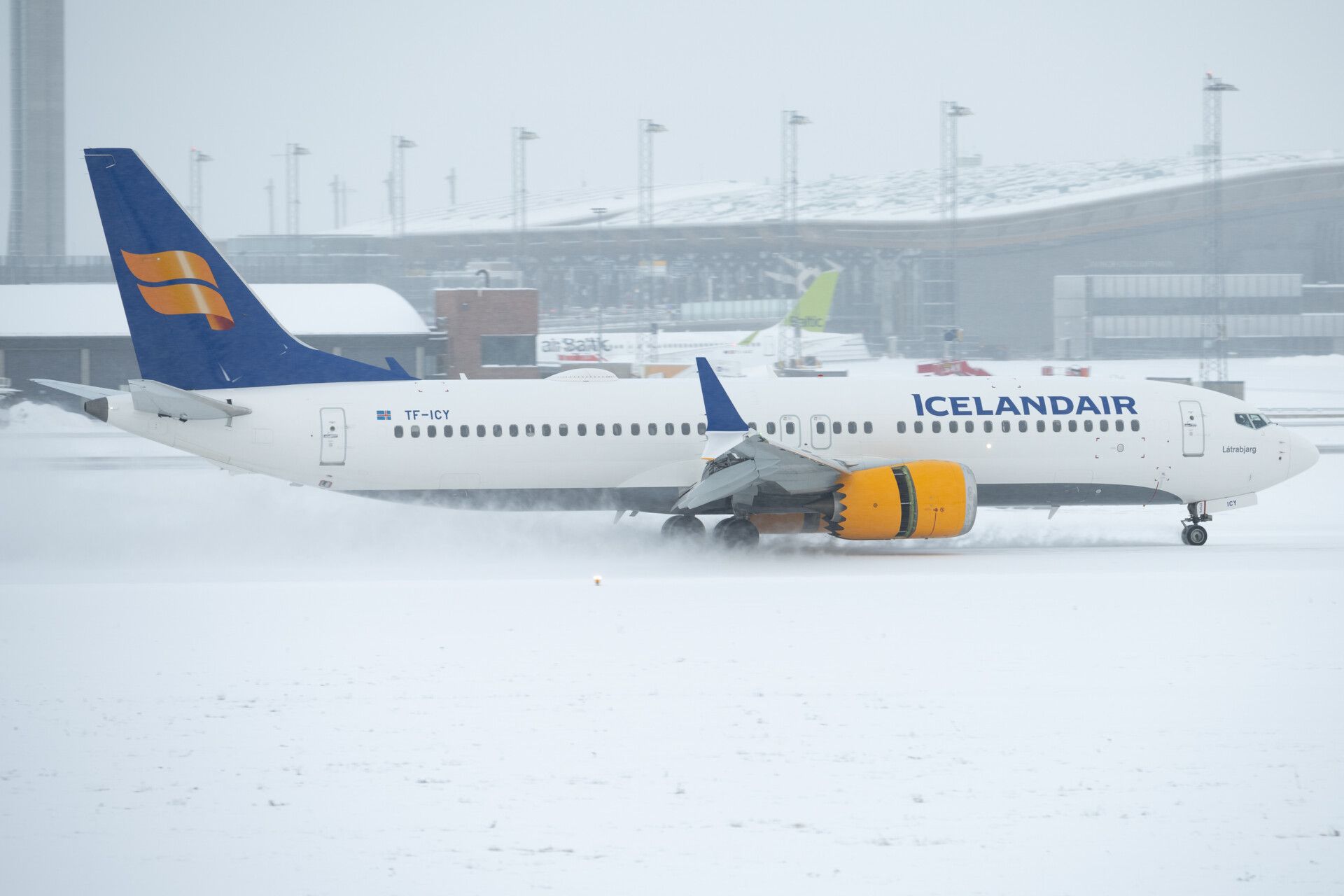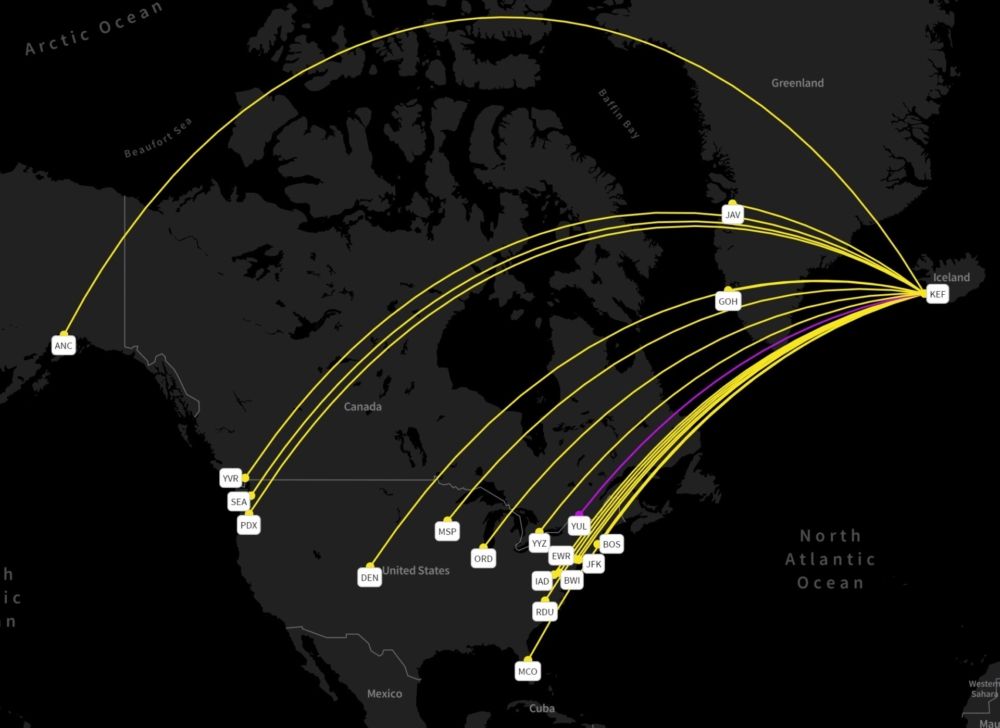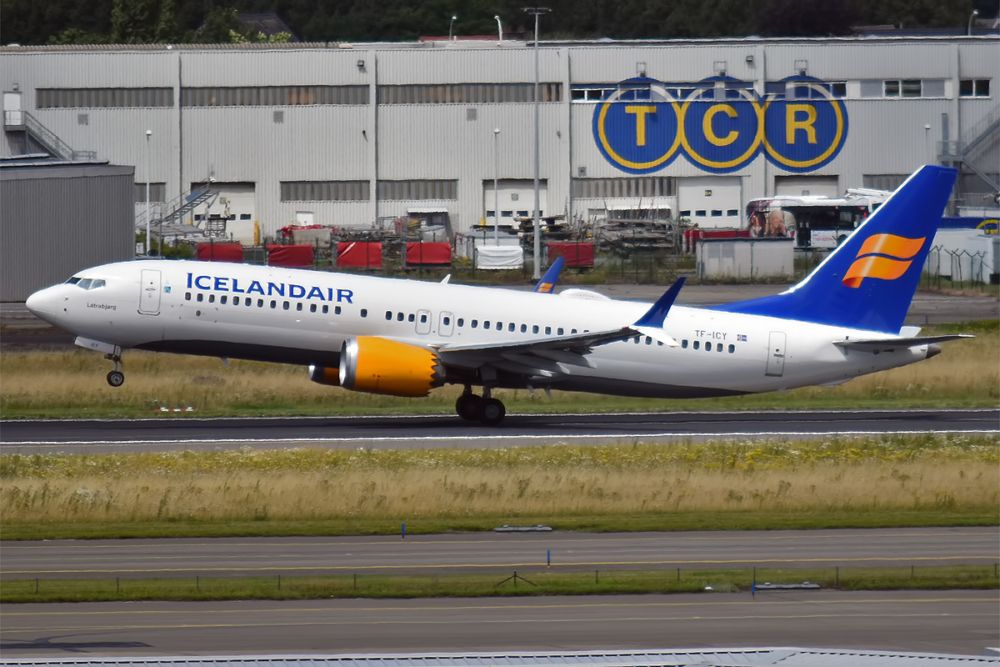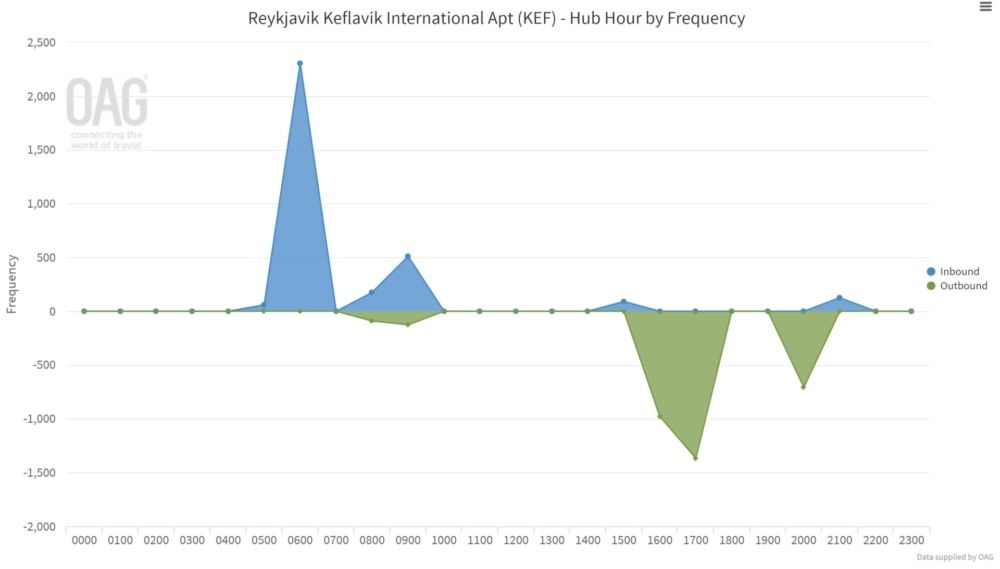Thanks to Montréal returning, Icelandair will serve 18 airports across North America this summer. Over half of US and Canada flights are by the B737 MAX, with the B757 – once the lifeblood of Icelandair – increasingly taking a backseat.
1 in 2 North America flights is now by the MAX
This summer, Icelandair will serve 18 airports across the US, Canada, and (excitingly) Greenland. According to OAG, 3,269 departures from its Keflavik hub are planned. Of these, the B737 MAX (the -8 and -9 combined) have 53% of flights and the B757-200ER a quarter. Showing how the carrier's fleet use has changed, the B757 variant had 66% of flights in summer 2019.
- B737 MAX 8: 42% of Icelandair's summer flights to North America
- B757-200ER: 26%
- B767-300ER: 18%
- B737 MAX 9: 11%
- Dash-8-200: 3% (37-seat aircraft used on long legs to Greenland)
Stay aware: Sign up for my weekly new routes newsletter.
Icelandair's MAXs: a summary
Icelandair received its first MAX 8 in 2018 and its first MAX 9 the following year. Some nine aircraft are currently in its fleet, of which six are -8s and three -9s. All are active, and they have either 160 or 178 seats, as shown below.
- B737 MAX 8s: 160 seats, with 144 in economy and 16 in business
- B737 MAX 9s: 178 seats, with 162 in economy and 16 in business
The MAX is the smallest jet aircraft in Icelandair's fleet. They're designed in part to replace its B757-200s, which have an average age of 24.3 years, according to ch-aviation.com. A decision on its B757 fleet replacement was expected by the end of 2021, but nothing has yet been disclosed.
Montréal is back
Icelandair's Canada network is far more limited than the US, with Raleigh Durham to start this summer. As such, it's no surprise that the US has a far higher proportion of MAX flights (57%) than its northerly neighbor (43%). This includes Montréal, which will take off on June 24th after a long pandemic-driven absence.
Operating on Wednesdays, Fridays, and Sundays, the 2,322-mile (3,737km) link to Québec has the following schedule (all times are local). It has an outbound block time of five hours and twenty minutes. Inbound, it's five hours – the same as Wizz Air from Keflavik to Naples.
- FI805: Keflavik-Montréal, 20:15-21:35
- FI804: Montréal-Keflavik: 23:30-08:30+1 the following day
Montréal: zero to three airlines in 15 months
Icelandair inaugurated Montréal on March 19th, 2016, a couple of weeks after WOW (remember that airline?) began the route. Air Canada joined the party on June 23th, 2017, making a trio of operators in very little time.
Air Canada was focused on point-to-point (P2P) and Canada/US transit passengers, while Icelandair and WOW targeted P2P and wider Europe-bound demand. All used narrowbodies, with up to 15 weekly flights, vividly showing how rapidly it grew and how unsustainable it was. Although I think it's unlikely in the near term, will PLAY launch Montréal?
What do you think of the developments? Let us know in the comments.




